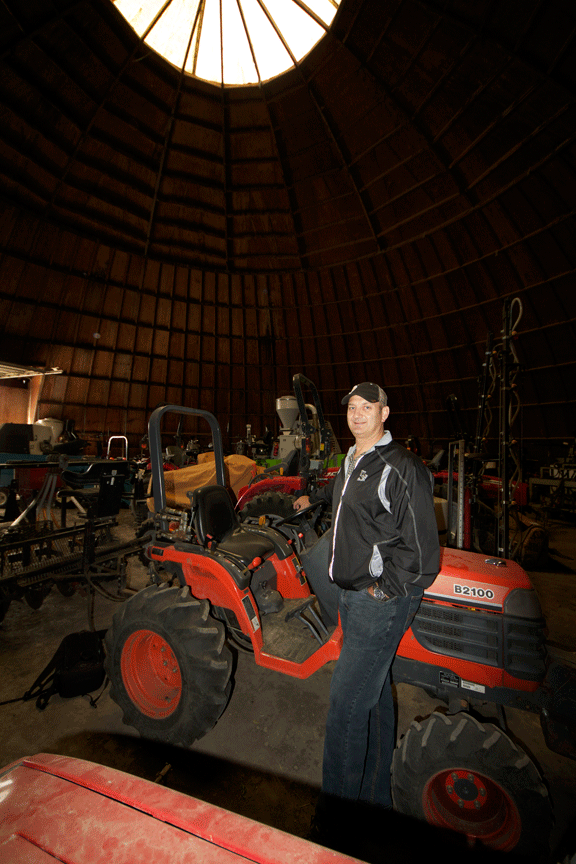Demolition of the Dome
A little beat up, a bit weather worn, the Dome as it is called at the university’s Crop Science Field Laboratory on Preston Avenue will be torn down this fall, having done yeoman’s service since 1968 as both a storage facility and an engineering experiment.
By Colleen MacPherson Tacked up inside one of the building's two overhead doors is a piece of cardboard on which someone thought to record its details. Built by Herbert Construction of Dundurn, the dome is 80 feet in diameter and 28 feet tall at the centre where natural light filters in through fibreglass panels. It encompasses 5,020 square feet of space and was built at a cost of $2.85 per square foot—$14,307 in total. But it is the style of construction that makes the Dome so unique, according to Bryan Harvey.
Tacked up inside one of the building's two overhead doors is a piece of cardboard on which someone thought to record its details. Built by Herbert Construction of Dundurn, the dome is 80 feet in diameter and 28 feet tall at the centre where natural light filters in through fibreglass panels. It encompasses 5,020 square feet of space and was built at a cost of $2.85 per square foot—$14,307 in total. But it is the style of construction that makes the Dome so unique, according to Bryan Harvey.The professor emeritus in the Department of Plant Sciences recalled that the builder made a deal with the Department of Mechanical Engineering to test the unconventional structure "so we got it for a song." Except for the framing around the doors and the skylight, the building is constructed entirely of plywood sheeting covered by asphalt shingles, which as far as Harvey can remember, have never been replaced.
A careful look at the highest points in the Dome reveals small hooks from which mechanical engineers hung weights in an effort to test its structural integrity. "They realized they'd have to actually destroy the building" before it reached the breaking point, a testament to the worthiness of the design.
"But it's the acoustics that are really interesting," said Harvey. "Sound really echoes and there are places where you can't be heard by someone standing right next to you. Then there are other places where you can whisper, and someone standing on the other side can hear you."
Kirk Blomquist can also attest to the odd acoustics. On the day On Campus News visited, lab employees were starting up and moving out equipment, and the sound was deafening. But had there not been a tractor in the way, Blomquist, superintendent of field operations, would have demonstrated that at the very centre of the structure, there is no echo at all.
Besides being an engineering experiment, the Dome has been a storage facility for the College of Agriculture and Bioresources' small plot field research equipment—the specialized seeders, combines and tractors used to work test plots. The building has served its purpose, said Blomquist, and is definitely showing signs of age.
"This is a design that worked really well for farmers when farms were small. Although we don't have big equipment, we now have more of it and it's very expensive so it needs to be stored inside, but it's really tough to store square things in a round building."
So the Dome will come down, to be replaced by a pre-engineered straight-walled structure that should be up by the start of the new year. At 7,200 square feet, that building will provide much-needed space for equipment but it will cost "a bit more" than the original, said Blomquist. "It won't be pretty, but it'll be functional."

